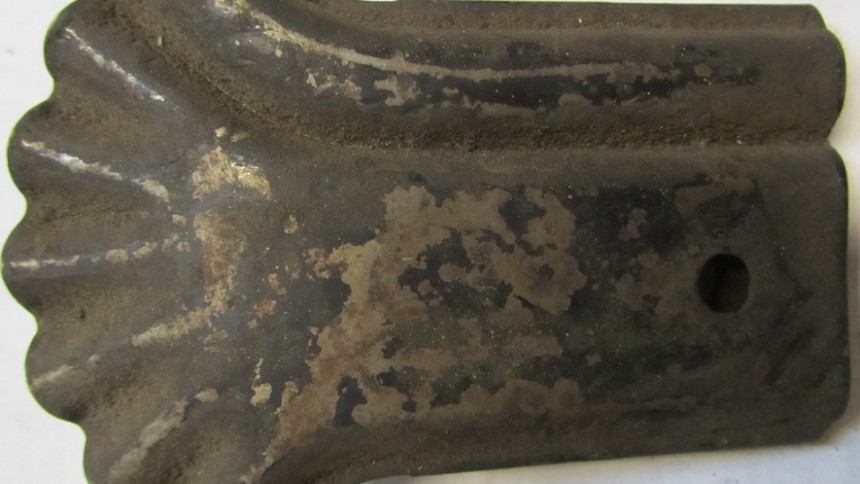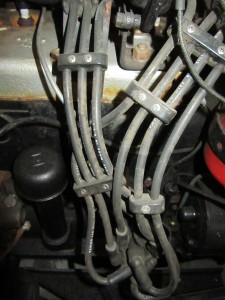Had a late 40’s Plymouth flathead 6 in the garage a couple of weeks ago on the Sun Computer II. The comparison of secondary voltage at the plugs showed #5 cylinder being noticeably lower than the other cylinders. The Sun Tester (a Colonial Region Tool) displays all secondary voltages together on the scope and quickly points out the discrepancies.
It reminded me that there should be a quick technical article on Crossfiring; if you stand at the back of the car and listen to the exhaust a distinct popping can be heard when Crossfiring may be present. It’s typical of Plymouth 6 flatheads and some claim they can pick out the engine blindfolded just listening to the exhaust.
Think: Electromagnetic induction in parallel wires
Theory: Two wires (conductors) run close to each other with one having an intended sudden current (to fire it’s spark plug) will have a rising & collapsing electromagnetic field around the wire. When that electromagnetic field cuts thru a close parallel wire it Induces a current in that close second parallel wire. The net effect is to cut down on the voltage in the intended/wanted wire and put a weak current in the undesired wire.
This can lead to Crossfiring or miss firing in the intended cylinder with unspent fuel making it’s way into the exhaust stream. The unintended cylinder also get a weak firing at the wrong time. The popping in the exhaust is your message that the engine is running inefficiently in the power, gas mileage, life & hydrocarbon departments.
Plymouth flathead 6 have typical crossfiring in some cases because of the way someone desired to “cleanup” the plug wires by placing 6 parallel wires and the coil wire bound tightly together and parallel in the following commonly recognized device:
If your flathead 6 Plymouth is driven a lot you may want to space plug & coil wires and cross wires at right angles; your engine will purr & Mr. Blindfolded will guess wrong.
This however might result in losing points at a judging meet so have a spare setup for that occasion?



